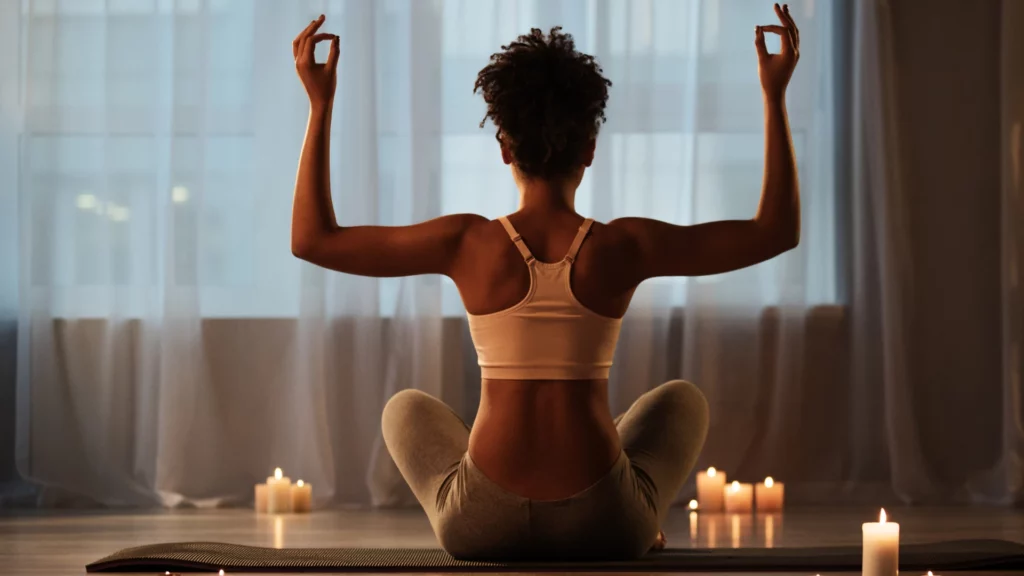Building Greater Resilience: Yoga as a Balm for Stressful Times with Judith Hanson Lasater

Article At A Glance
The good news is that many stress-related health conditions can be avoided or improved via lifestyle changes. These changes include making better choices, modifying negative behavior, and–perhaps most importantly–carving out time for mind-body techniques like yoga to soothe and calm our cranky nervous systems. According to renowned yoga teacher Judith Hanson Lasater, yoga is a balm for stressful times.
According to the Centers for Disease Control, the term Multiple Chronic Conditions (MCC) describes the reality for one in four people in the US. And, while only constituting 25% of the population, people with MCC account for a whopping 71% of the total healthcare spending in the United States.
Judith Hanson Lasater, Ph.D., describes this suite of ailments as “wear-and-tear diseases,” largely resulting from poor lifestyle habits. Reflecting our fast-paced lives and the tendency toward hypervigilant nervous systems, over-caffeination, and inadequate sleep, the cumulative effect of chronically elevated stress has a long-term, negative effect on all aspects of health.
The good news, notes Judith, is that virtually all of the conditions cited can be avoided or improved via lifestyle changes. These include making better choices, modifying negative behavior, and–perhaps most importantly–carving out time in our lives for mind-body techniques like yoga in order to soothe and calm our cranky nervous systems.
Yoga As a Vehicle for Greater Inner Resilience

Judith, a scholar of East-West Psychology, author, physical therapist, and world-renowned Yoga teacher, has helped literally thousands of students since 1971 to tap into their own health resources.
Bucking the trend in modern postural yoga to go for strength, speed, and challenging asana practice, Judith prefers practices that evoke a calming stillness in order to restore health from the inside out. She maintains that to cultivate inner wisdom, carving out the time and space to be still is an absolute necessity.
Judith notes that how we show up for our practices greatly affects our ability to recognize better self-care choices and how yoga can heal stress.
“One of the questions that I pose in restorative practice is, “What am I allowing to have my intention right now? Is it my phone? My computer? My child? Because if we’re on the mat and not really there, it’s an exercise. But if we take one breath in gratitude, that changes everything,” she explains,
Judith believes that practicing yoga in any form is an exploration of how to be truly present for whatever challenges life offers. Unlike simple stretching or movement exercises, she describes the movement of yoga as sacred, a holistic blend of our physical, emotional, mental, and spiritual selves. And weaving those parts into an embodied whole is what it means to be a human being.
Yoga Heals Stress: We Are Each The Catalyst For Our Own Yoga Practice

“Yoga practice invites us to show up to our mats fully present and open to receive it,” she states. “By approaching practice with a whole heart, all of who we are is what we bring to the mat. The more we know that and the less fear we have, the more integrated we have the potential to become.”
Judith says we can derive benefits from any form of yoga, even the simplest asana practice, if we challenge ourselves to ask not only what we can get from our Yoga practice but to explore what we will, in turn, bring to it in the way of intentions, attitudes, hopefulness, and love. How we approach our practice mirrors the rest of our lives.
“Do we come to the mat with aggression or resentment? Are we halfway doing it or using it as an escape to manipulate our attention from what’s happening in our lives and calling that discipline? The practice is neutral. The poses are neutral. But what they do is to show us who we are,” Judith explains.
“I have always felt that there is really no difference between the way I do Trikonasana or the way I exhale or the way I live or how I want to befriend myself by observation and letting go of my attachments,” she continues.
Whatever possibility we are seeking, we can find because everything is there. “If you just want to get strong and flexible, that’s there. If you want to cultivate a deeper practice, that’s there. The variable is not the practice or the pose, the breath, the meditation technique, or the mat. The variable is you and me when we filter our practice through our own systems–memories, genetics, and languages. That’s when it’s transformed and when it roots in us.”
Yoga and Healing Stress: Restorative Yoga Is a Balm In Stressful Times

Judith’s path toward Restorative Yoga stems from a personal experience in her own life, the death of her twin brother in 1992. She found herself seeking solace in silence, stillness, and slow movement. From that experience, her first book on Restorative Yoga, Restore and Renew, emerged. Her ninth and most recent book, Restore and Rebalance, Yoga for Deep Relaxation, also explores the potential of regaining health via meditative movement.
Judith says that Restorative Yoga offers a way of releasing the past. Taking 20 minutes a day to let go of tension in the muscles and soft tissues makes space for sinking deeply into the present, into a wonderful, quiet moment, with no ambition, no judgment, and no expectations of us other than our presence.
“All of who we are is what we bring to the mat,” She says. “The more we know that and the less fear we have about that and the more we accept that, the more integrated we have the potential to become.”
Also, read...
In Celebration of Gray-Haired Yoga – Busting the Myth of the Yoga Body
Stand Firm: 6 Easy Balancing Moves for Your Daily Yoga Routine
Related courses

Lynn Crimando, MA serves as the lead teaching mentor for YogaUOnline’s Wellness Educator Program. She is a yoga teacher, C-IAYT Yoga Therapist, board-certified Health and Wellness Coach, and a Buteyko Practitioner. Lynn is certified by the National Academy of Sports Medicine as both a Certified Personal Trainer and a Corrective Exercise Specialist. She has a private practice in the New York City area and teaches ongoing classes on behalf of Health Advocates for Older People. To learn more about Lynn, visit her website: yogalynn.com.



